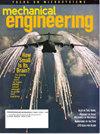回收机器人
IF 2.1
4区 工程技术
Q2 ENGINEERING, MECHANICAL
引用次数: 5
摘要
多年来,机器人一直在装配线上工作,比如在汽车工厂,它们重复地执行同样的任务。本文探讨了公司如何将机器人技术与人工智能结合起来,以便在分类可回收物时做出所需的各种判断。这不是机器学习通常涉及的那种引人注目的任务,比如驾驶汽车或在医学扫描中发现癌症生长,但它可以为回收公司节省资金。本文章由计算机程序翻译,如有差异,请以英文原文为准。
Recycling Robots
Robots have functioned for years on assembly lines, such as in automotive plants, where they perform the same task repetitively. This article explores how companies are coupling robotics with artificial intelligence in order to allow them to make the kinds of judgements needed in sorting recyclables. It isn’t the kind of high-profile task normally associated with machine learning, such as driving automobiles or finding cancerous growths in medical scans, but it could save recycling companies money.
求助全文
通过发布文献求助,成功后即可免费获取论文全文。
去求助
来源期刊

Mechanical Engineering
工程技术-工程:机械
CiteScore
0.60
自引率
0.00%
发文量
21
审稿时长
6-12 weeks
期刊介绍:
Information not localized
 求助内容:
求助内容: 应助结果提醒方式:
应助结果提醒方式:


